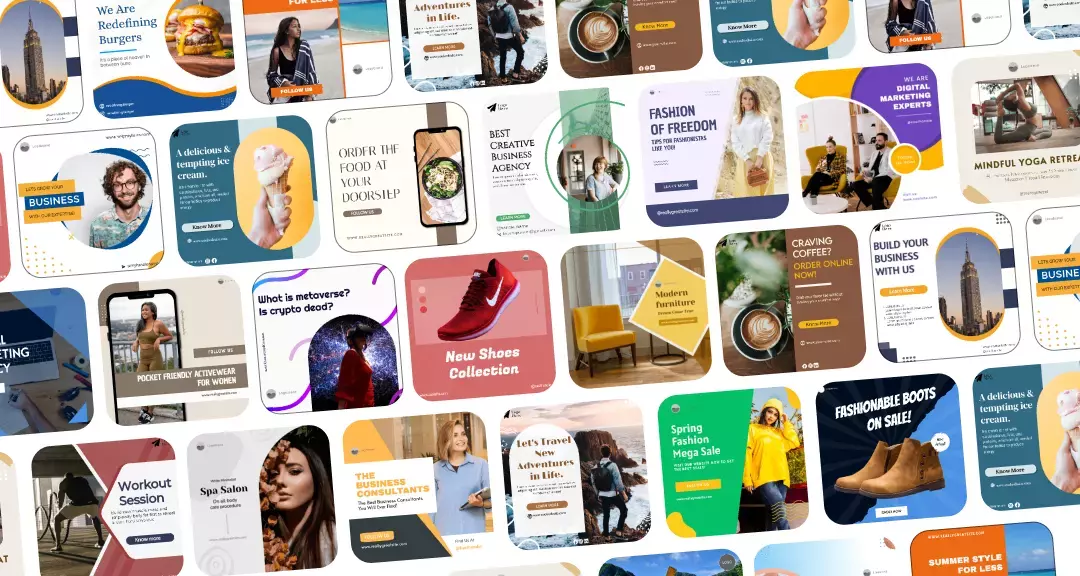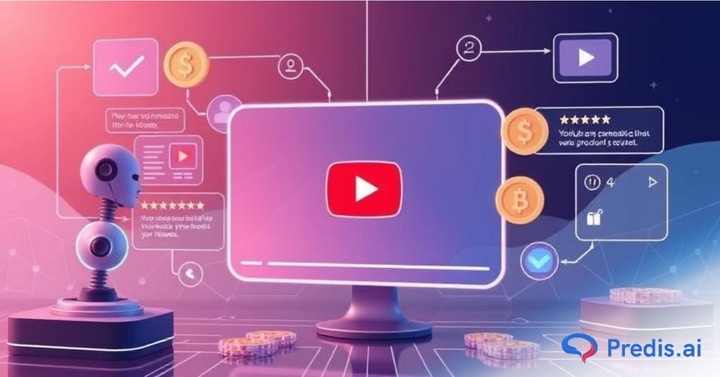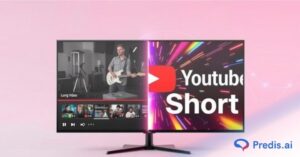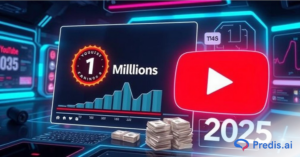Text to video, AI avatars, Voiceover content – there are so many ways in which you can make content with AI, much faster and for much cheaper. The result? Social media platforms are getting flooded with AI-made content! While some are genuinely interesting to watch, many are just low-effort, half-baked content that adds no real value to the user.
In an effort to crack down on this content, YouTube has updated its content monetization policy and AI video. But what changed? That is what we will analyze in depth in the following blog! Following that, we will be walking you through creating AI content that can still be monetized!
The Core YouTube Policy Updates You Must Know
Many of the key monetization requirement still stands unaffected, such as:
- You need to have at least 1000 subscribers
- 4,000 public watch hours (last 12 months) OR 10M Shorts views (last 90 days)
- And that content quality should be original and have human-made enhancement
Apart from this, there are now some additional updates that creators and advertisers need to keep in mind in regards to monetization for AI video.
- Fully AI-generated videos are not allowed – script, voiceover, and editing, all of which should not be done with AI
- Content should contain originality by being meaningful to the user
- Mass-produced, low-effort AI-driven content that adds no value to the user is not allowed
- YouTube encourages creators to clearly disclose if the content is generated with AI, in an effort to prevent viewers from getting misled
By avoiding these types of content, you can stay monetized and ensure that you are adhering to YouTube Partner Program Monetization policies.
These stances by YouTube have made it clear that YouTube wants clear original content with humans as the creators. It allows AI enhancement, but the human, original, and creative part of the video is what gets you a seat at the table.
Why is YouTube making stricter monetization policies?
YouTube depends on genuine engagement from the users, which takes a hit when their feed is littered with repetitive content, stock clips, and no real value. To curb this from happening and improve user satisfaction, YouTube is taking measures to add rules about monetization of AI-generated video.
It is also a way to incentivize creators who actually put in the time and effort to make valuable content for their users.
Apart from that, realistic AI content can be harmful as it can be used to impersonate people, spread misinformation, and do so much more harm than good. This could also be a reason why YouTube is trying to reduce it.
Deciding whether your content is safe for monetization or not – An AI videochecklist
Whenever you publish your content, stop and use this checklist to avoid getting demonetized:
- Is your AI-generated content paired with some manual effort – like original scripting, editing, and so on? If yes, then you are more likely to pass the bar.
- Is the content repetitive, and does it not add any real value to the user? In that case, YouTube might find your content inauthentic and stop it from getting monetized.
- Lastly, figure out if your content could be misinterpreted by some viewers as original. If that can happen, then you need to add a disclaimer stating that this is AI-generated content, so they can take it with a grain of salt.
If you want to understand how YouTube evaluates viewer engagement on AI-assisted videos, you can explore a breakdown of key performance metrics that influence long-term monetization health.
Tips to avoid getting demonetized by YouTube
Not every AI-generated piece of content is the villain here. In fact, by using it smartly, you can get AI to help you with the content creation process and still stay monetized. This way, you get the best of both worlds. Some tips to make this happen are:
- Have a unique angle, perspective, or take in your video that can make your content interesting to the user.
- Do voiceovers or your camera roll footage to add a human layer to your videos
- If you prefer editing, polish up the AI-generated content with b-roll footage and custom graphics.
- If your content could be misleading, then add a disclaimer mentioning that it is artificial content.
- Make sure your content does not have a real-life person’s likeness, as it could be taken as impersonation
- Try to add a unique element to every single one of your videos, and do not repeatedly publish templated content.
How to use Predis AI to create YouTube-compliant content?
Predis AI is an AI content generator that can help you make content from text prompts, product files, and so on. But how do you make sure the AI video stays compliant with YouTube monetization policies? This is exactly how you can ensure that:
- Write a good, interesting script with unique data, your own point of view, and supplementary examples. You can always use Predis AI to help with the script generation, but the core idea should come from you. Here is how Predis AI assists in script generation:
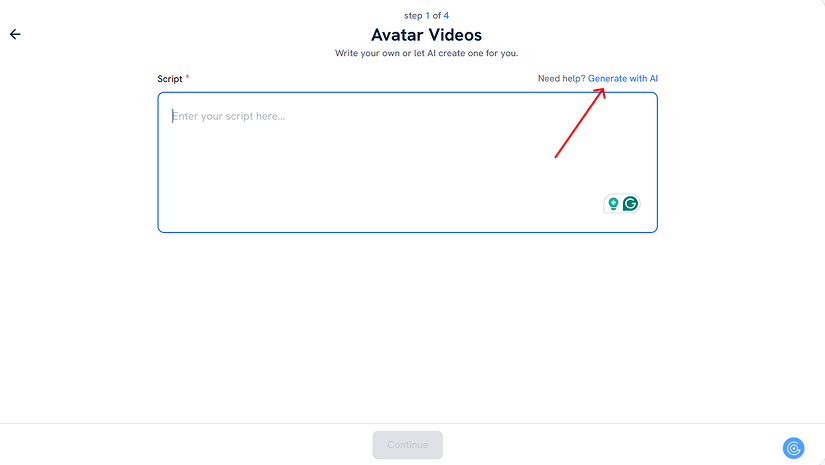
- Generate a base script using the tool according to your idea. This ensures that your content goes from idea to visuals in a few minutes, but uploading it as such is not recommended.
- Next up, you can edit the video based on what you prefer. You can either add some visuals that you shot, add your own voiceover so that it can be more authentic.
- Make sure to publish the content as synthetic when uploading the content to YouTube so that your audience will not be misled.
In essence, AI will do most of the heavy lifting, but you have to take the final call yourself to make the content original. This not only ensures the content is engaging to the audience but also makes it eligible for monetization.
Monetization long game: strategies to protect revenue
Monetization vulnerability is not just a short-term risk — repeated low-effort uploads can damage long-term channel health. Here are strategies to protect ad revenue and diversify income:
- Blend ad revenue with other streams: memberships, affiliate, sponsorships, and merch reduce dependency on YPP-only income.
- Invest in a signature series: recurring shows with original hosts or recurring themes demonstrate originality.
- Keep upload cadence sustainable: fewer, higher-quality videos beat daily low-value uploads.
- Archive your production proof: maintain prompts, script drafts, and editing notes in case YouTube requests evidence of transformation.
- Track performance metrics closely: If a batch of AI-assisted videos has poor retention, stop the series and retool before more damage occurs.
These steps protect you if YouTube tightens enforcement or algorithmic signals change.
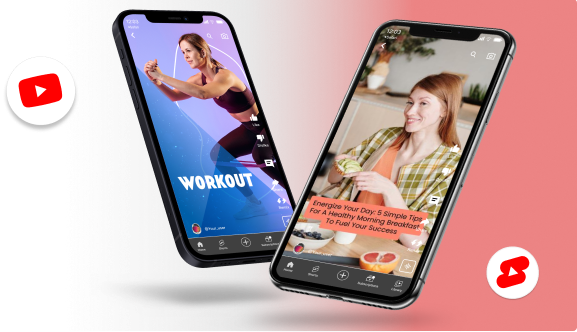
Common misconceptions about AI content and YouTube policy
“YouTube bans all AI content.” Not true. AI content is allowed — but must be original, non-misleading, and disclosed when realistic.
“Using AI voice invalidates monetization.” Not necessarily; what matters is whether the video is low-effort or mass-produced and whether it meets advertiser-friendly guidelines.
“One disclosure fixes everything.” Disclosures are required when content is synthetically realistic, but they don’t replace the need for originality and transformation.
Quick legal & safety checklist (do this every time)
- Do you have rights to any stock footage, music, or external clips? (License proof saved)
- Does any voice or likeness replicate a real person without consent? If yes, remove or get consent.
- Have you added a disclosure for synthetic content when it appears realistic?
- Is the content likely to be categorized as hate, harassment, or misinformation? If so, avoid or rework.
Conclusion
AI can be your creative co-pilot — it speeds production and expands what’s possible on YouTube. But the platform’s 2025 monetization updates make one thing clear: speed alone won’t pay the bills. Originality, transformation, and transparency are the currency that keep channels monetized and trusted.
Use tools like Predis to generate and scale, but pair them with human editorial judgment, meaningful disclosures when required, and a long-term focus on viewer value. So sign up, and make AI a tool that amplifies, rather than replaces, your creative voice.
FAQ:
No, using voiceovers and avatars will not automatically get your videos demonetized. If your content lacks originality and seems to be mass-produced with AI with no real value, then it has a higher chance of getting demonetized.
No, YouTube has not outright banned AI-generated content; instead, they have made low-effort, inauthentic content from being able to be monetized. YouTube still allows AI content with transparent, valuable, and engaging content to be monetized.
